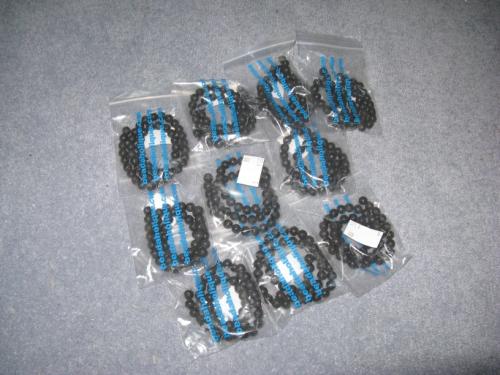Paint Problems
I am a very slow painter who paints in bursts throughout the year rather than anything resembling consistency. As a result, my paint collection contains a lot of infrequently used paints which thanks to high pigment levels end up getting rather unpleasant and either dry out or separate to the point that I need to use a lot of effort or a machine to shake them again, either way it is quite time consuming.
Reaper's Agitator
While testing out some other paints recently, I noticed that my reaper master series paints mixed a lot faster than the somewhat similar vallejo model color paints. Long has it been rumoured that reaper have a pewter skull inside each paint pot as an agitator, but I have never found any photographic evidence of this online. I decided to bite the bullet using a pot that I have rarely ever used, and so I present to you a (possibly) exclusive look at reaper's paint agitator present in each of their paints:


Spray Cans
When you shake a spray can, you can clearly hear the ball bearing inside which helps mix the paint. I figured I would buy some ball bearings and put them in my paints. I ordered a few hundred BBs and then thought to myself... rust? I mixed up some water with a little bit of salt as a catalyst just to see how quickly stainless steel BBs might rust:
New BBs:

Steel BB soaking in slightly salted water:
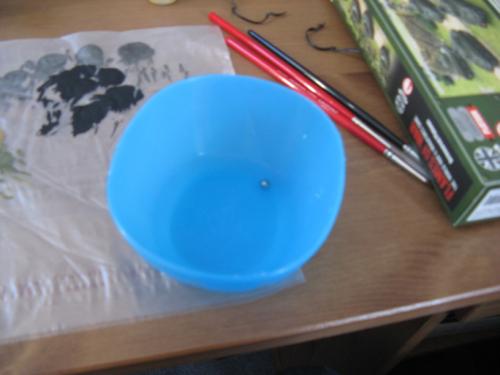
After 1 day rust was already starting to appear and stained the container:

It turns out most cans use ceramic balls that are a bit harder to acquire in a useful size. Steel rusts, even stainless steel and only marine grade stainless steel is appropriate which is a bit harder and more expensive to find. This left me trying to find a cheap, heavy ball to help mix my paint.
A Solution
After a few trips to the bead store, I found some lava beads which are completely unaffected by liquid as they are simply smooth, round stones. They come in an 8mm size which is big enough to be useful, but small enough to fit through the opening in a vallejo style paint bottle. They weigh considerably more than the pewter skulls which reaper use, so in theory should take less effort to agitate old paint.
A string of 8mm lava beads:
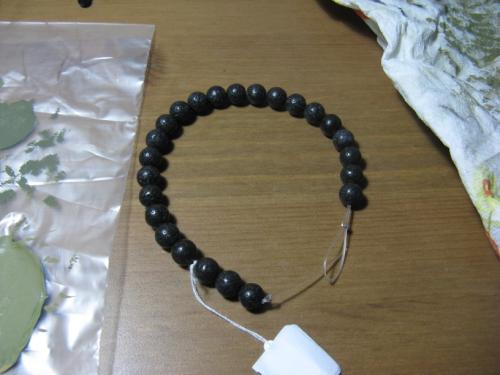
A lava bead soaking in salty water for over a week - no change!:

The next step was simple, just add some more water to my dehydrated paints and drop in a lava bead (or two) to each pot. Here are some before and after photos of a heavily separated foundation paint. The 'after' photo is from just 10 seconds of shaking the closed pot once the beads are inside. The two colour paints are because the green paint consumed the bead, whereas the flesh paint was so separated that the bead did not sink initially. The flesh paint took about 25 seconds of shaking to mix up perfectly so still a very good result.

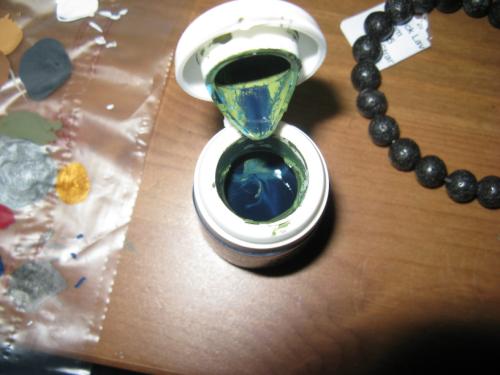


Next up was testing the vallejo model color paints. These have very high pigment content so separate if you leave them for just a day it seems. Shaking them is always a big pain and takes a lot of effort when they have separated to a great degree. The second photo below shows how to open a pot in case you have not seen it before (or have not had the joy of a pressure build up from a blocked nozzle forcing the cap off and ejecting paint all over your new carpet.. oops). As you can see, the diameter of the vallejo pot is about 12mm, so an 8mm lava bead will comfortably fit inside, even if you have a load of dried paint around the cap. When you put the lid back on, be careful of paint shooting out the nozzle from the increasing air pressure as the cap is lowered. You definitely want to wear gloves when doing this to vallejo models, and have a lot of tissue paper handy. The final picture below shows the paint looking very mixed after about 15 seconds of shaking with a bead inside the pot as an agitator.

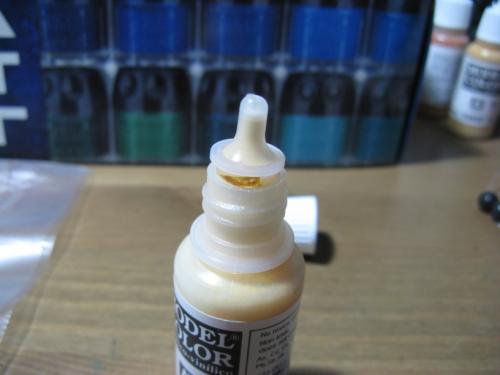

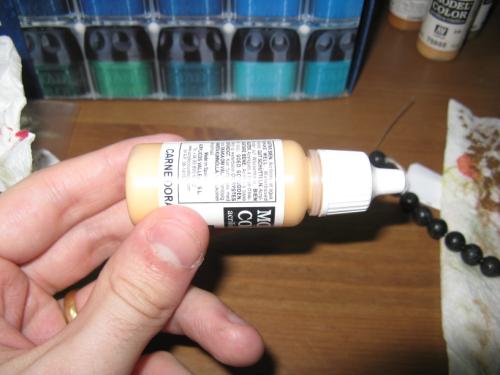
Finally, my tests went well enough that I bought a load of these beads from an online supplier. At time of writing the beads cost $4.49 for about 50 beads from beadaholique in the US (they ship worldwide). I have now got bead agitators in all my citadel paints about about 1/4 of my vallejo paints and soon will have them in all my paints. The change in effort required to shake paints to a decent mixture has been very positive and I can highly recommend adding agitators to your paints.
in the US (they ship worldwide). I have now got bead agitators in all my citadel paints about about 1/4 of my vallejo paints and soon will have them in all my paints. The change in effort required to shake paints to a decent mixture has been very positive and I can highly recommend adding agitators to your paints.
